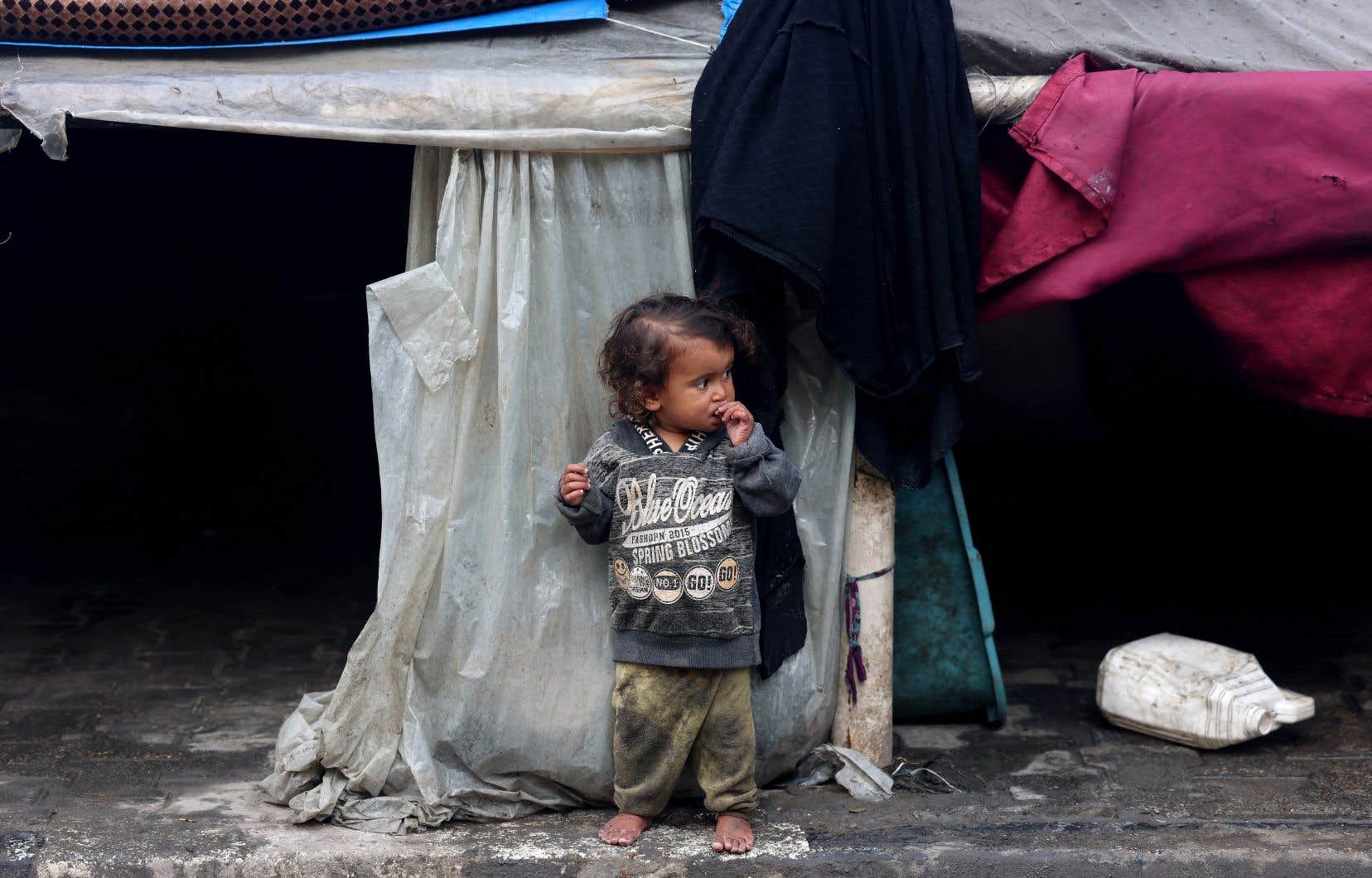The UN Secretary-General warned on Monday that humanitarian aid programs in the Gaza Strip would end in the event of an offensive on the overcrowded town of Rafah, from which Israel wants to evacuate civilians to definitively defeat Hamas .
The offensive “would not only be terrifying for the more than a million Palestinian civilians sheltering there; it would also sound the death knell for our aid programs,” warned Antònio Guterres at the opening of the 55e session of the Human Rights Council in Geneva.
Leaning against the closed border with Egypt, in the south of Gaza, Rafah is the only entry point for humanitarian aid, which remains “totally insufficient”, he stressed, for the small Palestinian territory. , besieged by Israel since the start of the war on October 7 against the Islamist movement.
In the West Bank, the Palestinian Authority government submitted its resignation on Monday to President Mahmoud Abbas, who exercises limited power in this territory occupied since 1967 by Israel.
Many countries are trying to dissuade Israeli Prime Minister Benjamin Netanyahu from launching an offensive in Rafah, where, according to the UN, nearly a million and a half Palestinians are massed.
While talks for a truce continue in Qatar, Mr. Netanyahu announced an upcoming ground operation against this city which he presents as the “last bastion” of Hamas, four months after the start of the offensive in ground launched on October 27 in the north of Gaza, then gradually extended towards the south.
Mr. Netanyahu assured Sunday that “total victory” over Hamas would then only be a matter of “a few weeks,” stressing that a truce would only “delay” this offensive.
“From the square” to the north
The army presented Monday to the war cabinet “a plan for the evacuation of populations from combat zones in the Gaza Strip, as well as the plan for future operations”, according to the prime minister’s office.
Mr. Netanyahu clarified on Sunday that there was “room” for civilians “north of Rafah, in the areas where we finished the fight.”
However, these areas remain under Israeli fire. An AFP correspondent reported several nighttime airstrikes on Rafah, on Khan Younes, a few kilometers further north, and in Zeitoun, near Gaza City, in the north.
The Hamas health ministry announced Monday that 90 people had been killed in 24 hours across the territory, including 15 members of the same family in Gaza City.
The war broke out on October 7 when Hamas commandos infiltrated from Gaza launched an unprecedented attack on southern Israel, which resulted in the deaths of at least 1,160 people, mostly civilians, according to a count. ‘AFP produced from official Israeli data.
During the attack, some 250 people were kidnapped and taken to Gaza. According to Israel, 130 hostages are still being held there, 31 of whom are believed to have died.
In retaliation, Israel vowed to annihilate Hamas, in power in Gaza since 2007, which it considers, along with the United States, Canada and the European Union, to be a terrorist organization.
The Israeli offensive left 29,782 people dead in Gaza, the vast majority of them civilians, according to the Hamas Ministry of Health.
“Hungry”
In the Gaza Strip, hit by a major humanitarian catastrophe, 2.2 million people, the vast majority of the population, are threatened with “mass famine”, according to the UN.
International aid is trickling in from Egypt, subject to Israel’s green light, and its delivery to the north is almost impossible due to destruction and fighting.
Benjamin Netanyahu’s office also announced Monday that the war cabinet had approved a plan to provide humanitarian aid “that will prevent looting,” without further details.
Palestinians in Gaza told AFP of being forced to eat leaves, fodder for livestock, and even slaughter draft animals for food while the rare aid convoys reaching the north are looted by the population .
“We are dying of hunger,” Abdallah Al-Aqra, 40, a refugee in Gaza City, told AFP. He said the army had fired on Sunday “at hungry people who were trying to get flour” brought by an aid truck.
“Contours” of an agreement
The mediating countries, Qatar, Egypt and the United States, are meanwhile trying to negotiate a compromise with both parties with a view to a truce.
White House national security adviser Jake Sullivan spoke on Sunday of “common ground” on the “contours” of a possible agreement on the release of hostages and “a temporary ceasefire » during a recent meeting in Paris between representatives of Israel, the United States, Egypt and Qatar.
According to a Hamas source, the discussions focus on the first phase of a plan drawn up in January by mediators, which provides for a six-week truce combined with the release of Palestinian hostages and prisoners held by Israel, as well as the entry into Gaza of a large quantity of humanitarian aid.
But Israel is demanding the release of all hostages during the break and has warned that a truce would not mean the end of the war.
Hamas, for its part, is demanding a complete ceasefire, the withdrawal of Israeli troops from the Gaza Strip and the lifting of the blockade imposed by Israel since 2007.
The war in Gaza has also reignited tensions on the border between Israel and Lebanon, where there are daily exchanges of fire between the Israeli army and Lebanese Hezbollah, an ally of Hamas.
On Monday, Israeli strikes targeted Hezbollah targets in eastern Lebanon for the first time since the start of the war, killing two fighters from the pro-Iranian movement. Hezbollah announced that it had fired 60 rockets at an Israeli military base in the occupied Golan Heights in retaliation.
